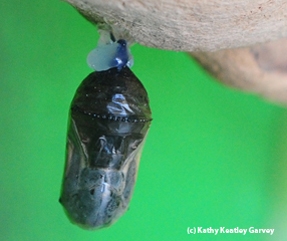
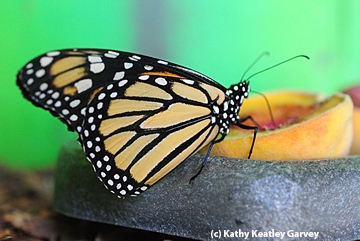
A middle-aged woman takes the sign literally. "What would you do if you saw THAT bug in our backyard?" she asks her daughter, about six years old.
"Yecch!" responds the daughter. She didn't say what she would do, but "survival" (hers, not the bug's) seemed to be the key issue.
They were looking at an assassin bug, considered a beneficial insect in the garden.
Now if those visitors were entomologists or bug enthusiasts, they'd probably begin the conversation with one of these three scenarios:
- "Ooh, there's an assassin bug! How lucky can we get!"
- "So beautiful! A work of nature, isn't it?"
- "Oh, wait, I'm going to shoot (photograph) it."
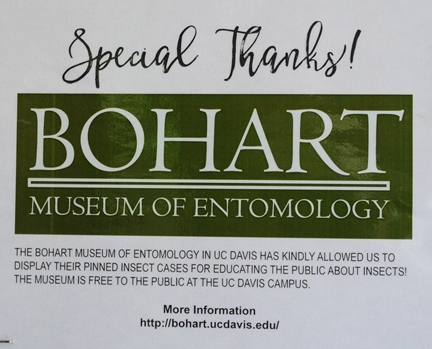
Butterflies? Check! The specimens include monarchs, Western tiger swallowtails, anise swallowtails, West Coast ladies, painted ladies, red admirals, and the pest, the cabbage white. (Note: according to Art Shapiro, UC Davis distinguished professor of evolution and ecology at UC Davis, there are more than 300 species of butterflies in California. See his monitoring site. "And 118 have been recorded at my Donner Summit study site alone. There are about 30 species breeding in Davis right now and probably 90+ in Yolo, Solano, or Sacramento County alone--about 100 in Colusa or Napa...")
Dragonflies and damselflies? Check.
Those misunderstood assassin bugs? Check.
Another display at the Bug Barn showcases the life cycle of a monarch, featuring live monarchs and a chrysalis. Visitors at the Insect Pavilion on Wednesday morning, July 26, seemed to like that display more than they did the others. "Oh, my, a live monarch!" Out came the cell phones for quick photos.
A bee observation hive from beekeeper Brian Fishback of BD Ranch and Apiary in Wilton also drew attention. Fishback began keeping bees in 2008 and worked at the Harry H. Laidlaw Jr. Honey Bee Research Facility, UC Davis, with bee breeder-geneticist Susan Cobey, now of Washington State University.
“Today we continue to share our knowledge with outreach programs to encourage interest in honey bees and share the importance of the bees to our environment as well as our food supply," Fishback wrote on his display. “At BD Ranch, I work very hard rescuing colonies from destruction from pest control companies, nervous homeowners, people unfamiliar with what bees are doing during swarming seasons. By rescuing and raising these feral colonies into strong hives, I can raise queens to carry the surviving genetic traits to other hives that increase their survival."
Meanwhile, just outside the Insect Pavilion, bees buzzed in the garden, unaware of the visitors expressing an interest in them. A honey bee foraged on a blooming sunflower, trailing, stopping, trailing...
Just as the humans were doing inside the Insect Pavilion...
Attached Images:
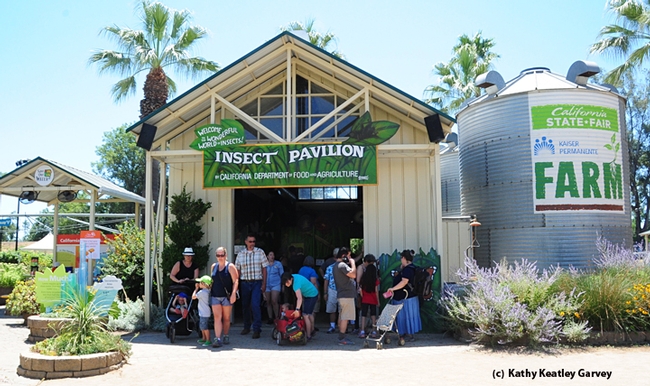
Visitors wander in and out of the California State Fair's Insect Pavilion. The 2017 fair ends July 30. (Photo by Kathy Keatley Garvey)
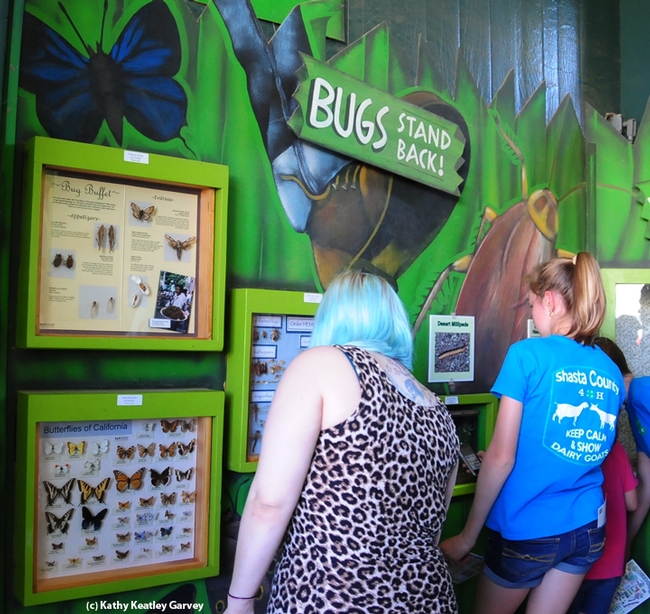
Bug enthusiasts get a closer look at the specimens shown by the Bohart Museum of Entomology. (Photo by Kathy Keatley Garvey)
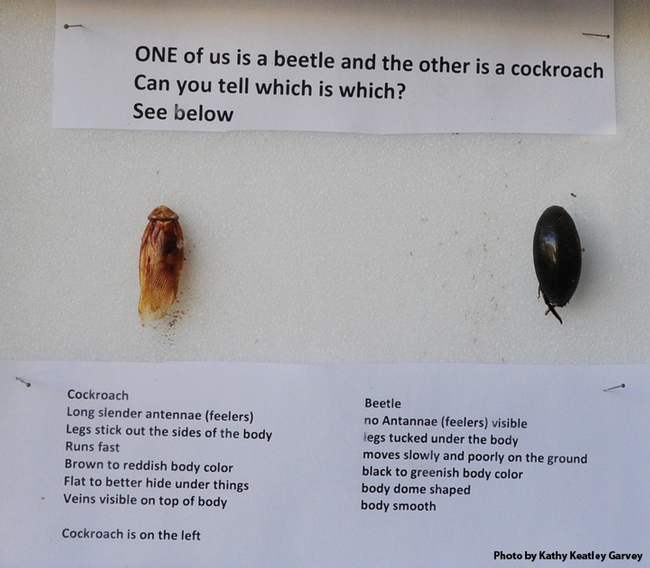
A California State Fair educational display in the Insect Pavilion about cockroaches and beetles. (Photo by Kathy Keatley Garvey)
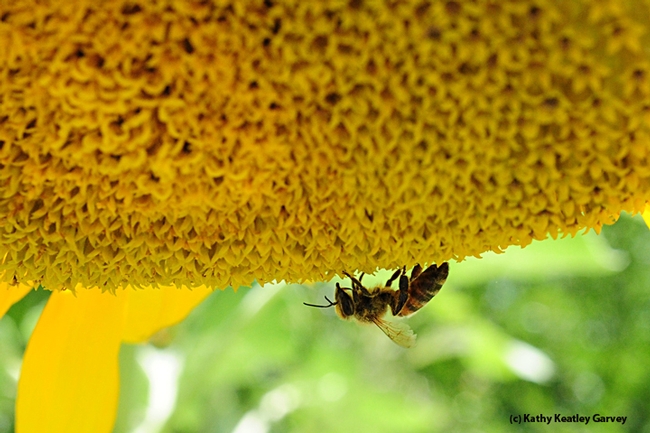
A honey bee forages on a sunflower just outside the Insect Pavilion. (Photo by Kathy Keatley Garvey)
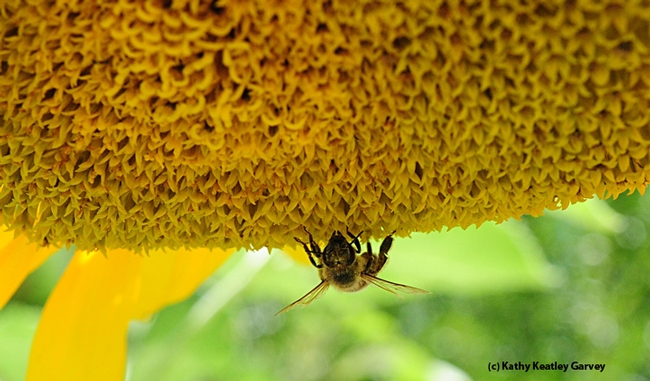
The honey bee stops and eyes the photographer. (Photo by Kathy Keatley Garvey)